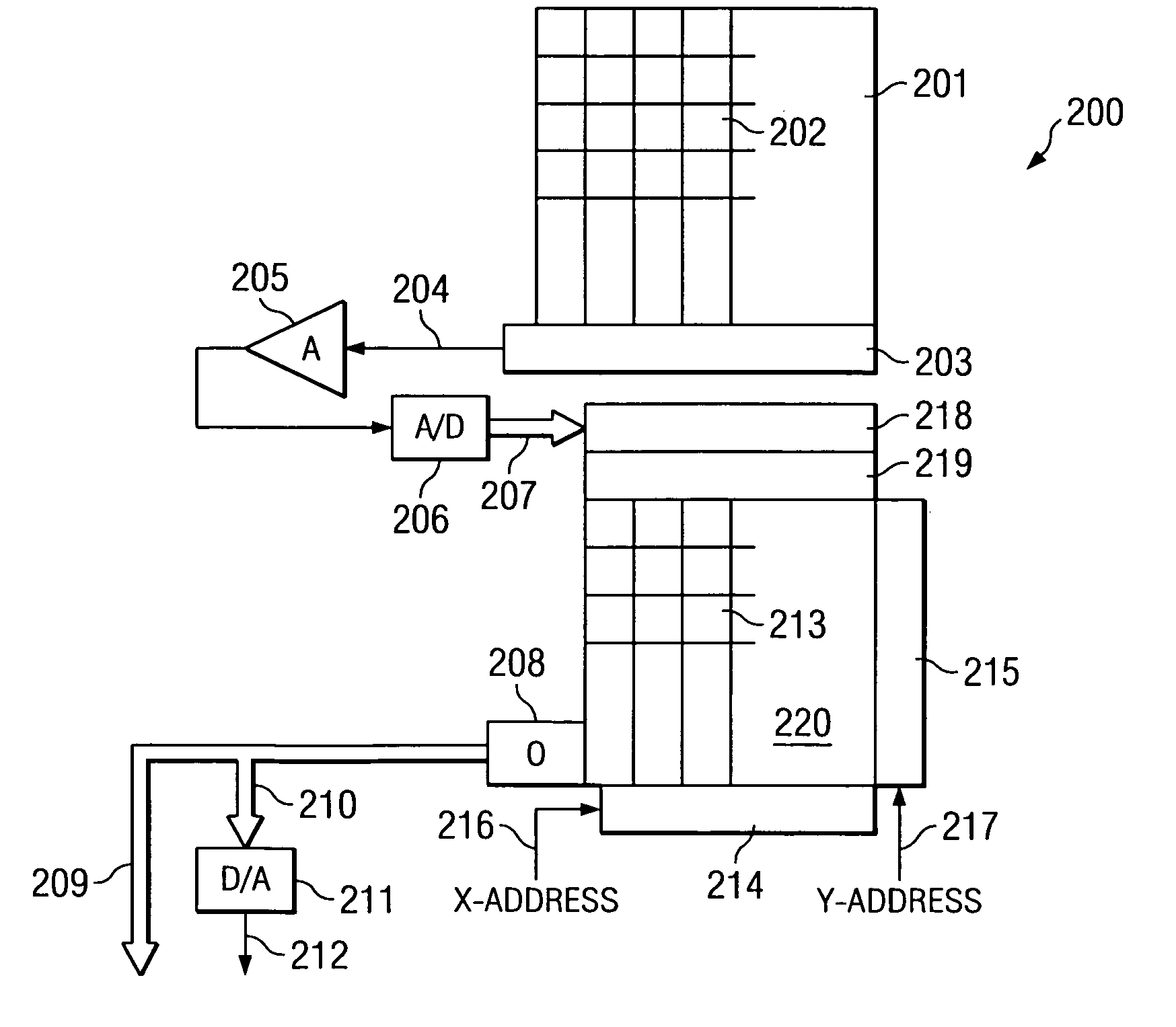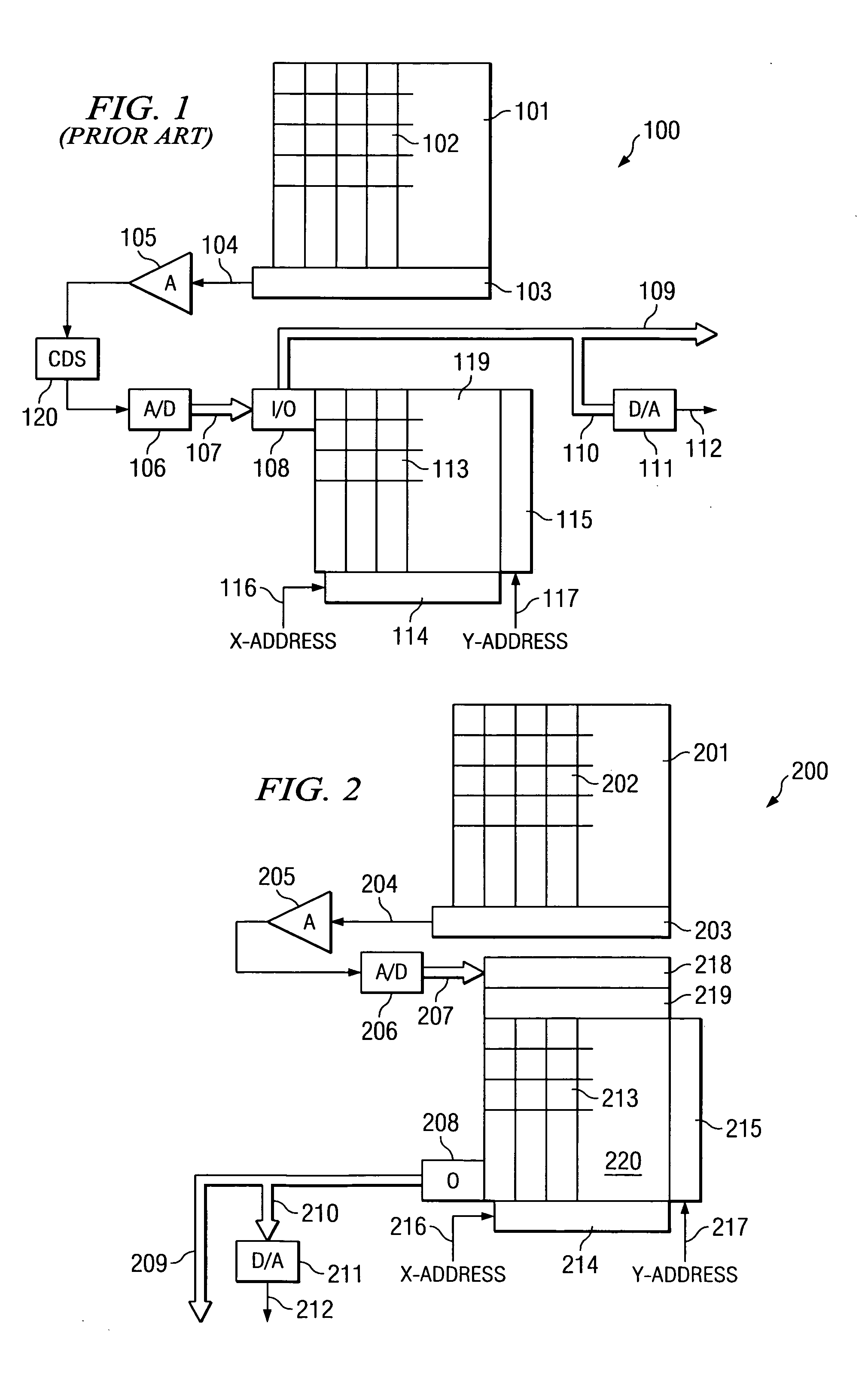Low noise image sensing system and method for use with sensors with very small pixel size
a sensor and low noise technology, applied in the field of solid state image sensors, can solve the problems of direct relationship between chip size and consequently pixel size, obstacles and limitations in the process that need to be overcome first, and the small well capacity of smaller pixels, so as to achieve small pixel sizes, small well capacity, and high performance.
- Summary
- Abstract
- Description
- Claims
- Application Information
AI Technical Summary
Benefits of technology
Problems solved by technology
Method used
Image
Examples
Embodiment Construction
[0008] In FIG. 1 drawing 100 represents a simplified block diagram of a typical prior art image sensing system that consists of array of pixels 101. When light impinges on the array charge is produced in individual pixels 102 and is integrated there. After completion of integration cycle, charge is readout first by shifting the whole line of pixels 102 into serial register 103 and then by shifting individual pixels one-by-one into charge detection node 104 that is buffered by amplifier 105. It is clear to those skilled in the art that CCD image area pixel array 101 can be easily replaced by a CMOS area pixel array and the readout register 103, detection node 104, and buffer amplifier 105, replaced by corresponding CMOS scanning and addressing circuits. For the simplicity of description such an alternative will not be discussed here any further. When the pixels of CMOS array are reset or when charge detection node 104 of the CCD image sensor is reset kTC noise is generated. This nois...
PUM
 Login to View More
Login to View More Abstract
Description
Claims
Application Information
 Login to View More
Login to View More - R&D
- Intellectual Property
- Life Sciences
- Materials
- Tech Scout
- Unparalleled Data Quality
- Higher Quality Content
- 60% Fewer Hallucinations
Browse by: Latest US Patents, China's latest patents, Technical Efficacy Thesaurus, Application Domain, Technology Topic, Popular Technical Reports.
© 2025 PatSnap. All rights reserved.Legal|Privacy policy|Modern Slavery Act Transparency Statement|Sitemap|About US| Contact US: help@patsnap.com


